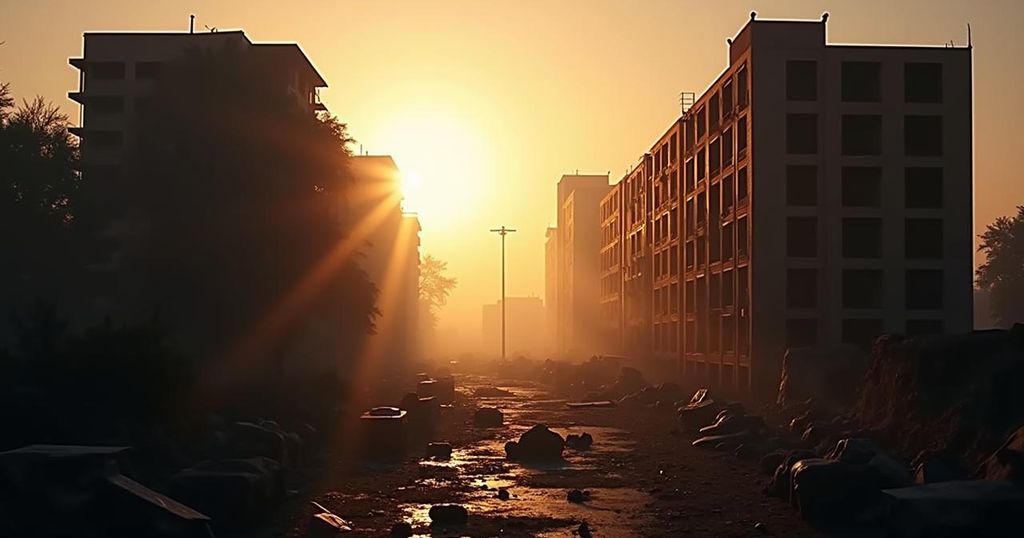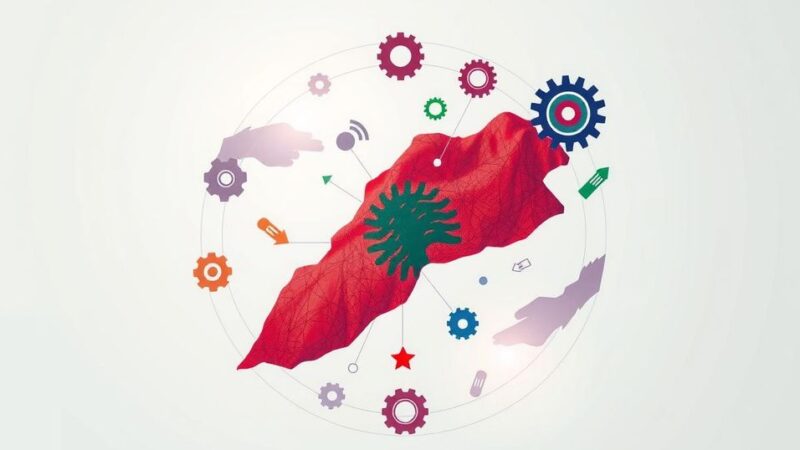On October 6, 2024, a 4.9 magnitude earthquake struck Awash Fentale and neighboring areas, causing structural damage and ground fissures. Samara University has been actively assessing the situation and advising residents on safety measures. The recent seismic activity has raised concerns over ongoing geological instability in the region, prompting monitoring efforts from various geological agencies.
Addis Abeba — On the night of October 6, 2024, a significant earthquake measuring 4.9 on the Richter scale affected the Awash Fentale district and surrounding regions, leading to reported structural damage to residences and the emergence of ground fissures. The tremor was noted at 8:10 PM, with its effects felt as far away as Addis Abeba, according to announcements from the Ethiopian News Agency (ENA). Samara University verified that the seismic event caused discernible damage to infrastructure and developed cracks within the affected locales. In a statement circulated on social media platforms, the university acknowledged that seismic activities in the Awash Fentale vicinity had been ongoing for more than two weeks preceding this quake. To assess and comprehend the full spectrum of the impact, the university’s Geology Department has been undertaking field research, particularly in the Sabure Kebele region, aimed at evaluating damage and promoting safety measures among the local populace. During interactions with community members, geologists urged residents to refrain from traversing the mountainous areas surrounding Fentale and locations near the Kesem Dam, issuing warnings regarding potential hazards from subsequent seismic disturbances. Moreover, international geological organizations, including the U.S. Geological Survey, have been closely observing the recent seismic activities in this region and have documented these incidents, including the tremor experienced on the noted date. Residents of Addis Abeba reported experiencing the quake, with numerous individuals taking to social media to document their reactions. Numerous videos and posts depicted the scene of individuals, particularly those inhabiting condominiums, evacuating their residences as a precautionary response during the earthquake. Samara University conveyed its apprehensions regarding the continuous seismic disturbances, emphasizing the distress caused by the damage inflicted upon homes in the affected areas. The ongoing geological instability is a matter of concern, and the university’s engaged efforts aim to mitigate risks and inform the public regarding environmental safeguards, especially amidst potential future seismic events.
Earthquakes, especially in vulnerable regions, pose significant risks to infrastructure and community safety. The Awash Fentale district is located in an area characterized by geological instability that can lead to frequent seismic activities. Understanding the implications of such events is crucial for preparedness and response in communities prone to geological hazards. Samara University, located within the affected area, plays a critical role in monitoring and assessing geological risks, contributing to public awareness and safety measures.
In conclusion, the October 6 earthquake measuring 4.9 on the Richter scale has underscored the vulnerability of the Awash Fentale area and surrounding regions to seismic activities. Samara University remains proactive in addressing the aftermath of this event through assessments and community outreach. The continued monitoring by both local university experts and international geological agencies highlights the importance of understanding and responding to the risks associated with ongoing seismic unrest to ensure community safety. The university’s efforts to educate residents about precautionary measures are vital in mitigating the impacts of future seismic occurrences.
Original Source: allafrica.com






